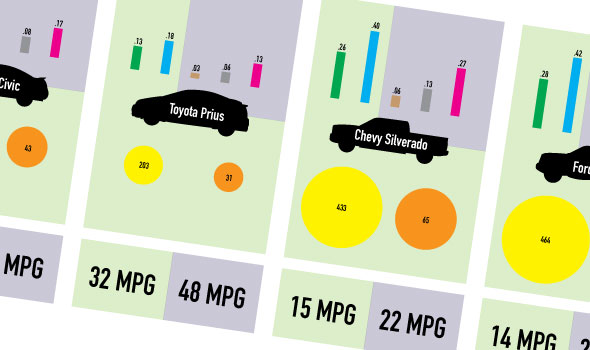EPA Releases Draft Assessment of Environmental Effects of Biofuels
Preliminary report describes an infant cellulosic biofuels industry with a mandate to grow up fast.
By Brett Walton
Circle of Blue
Congressionally-mandated biofuel standards will reduce annual carbon dioxide emissions in the United States by 138 million metric tons by 2022, according to a draft report released last month by the Environmental Protection Agency.
Yet, the document acknowledges that incomplete data, yet-to-be-made choices about cropping patterns, and production techniques still in a trial phase “make it difficult to draw conclusions” about how the fuel shift, which aims to reduce U.S. greenhouse gases, will affect the environment and natural resources, including water.
The assessment report is being reviewed by independent experts and will be formally released in 2012. But it is already clear that meeting the targets will require major upgrade of the nascent cellulosic biofuels industry.
The 2007 Energy Independence and Security Act requires the amount of renewable fuel blended into petroleum-based transportation fuels to rise from 9 billion gallons per year in 2008 to 36 billion gallons annually by 2022.
To meet the EISA target, the American biofuel industry must accelerate the development of new production processes, essentially from a standing start. These so-called “second generation biofuels” – which comprise the bulk of new supplies – must grow up fast.
In 2009 corn ethanol accounted for 95 percent of renewable fuel produced in the United States, totaling almost 11 billion gallons. Fuel standards revised last year, however, limit the amount of corn ethanol that counts toward the EISA volume target to 15 billion gallons per year – a plateau scheduled for 2015.
By then, it is expected that second generation biofuels made from cellulose derived from prairie grasses and plant waste will account for an increasing share of the volume mandate. It is anticipated that 16 billion gallons of cellulosic fuels will be produced in 2022.
But it will take at least a decade of persistent investment before the industry matures, said Bruce Dale, a biofuels expert at Michigan State University. Farmers must scale up feedstock production; commercial facilities must be built, and supply chains must be created.
Setbacks are already apparent. The cellulosic mandate was scaled down last year from 100 million gallons to 5 million gallons because there were not enough facilities to make it.
According to the draft report, there are no commercial-scale facilities for cellulosic fuels in the U.S., though six plants converting switchgrass to ethanol are under construction. Other plants are being slowed by financing that evaporated after the recession and by delays in getting government loan guarantees that lower the cost of borrowing. Poet, the biggest U.S. ethanol producer, has pushed back the start date for its cellulosic plant by several years.
“We are not limited so much by technology,” Dale told Circle of Blue. “What we are limited by is our policy choices. We haven’t chosen, really, to replace oil yet.”
Dale pointed to EPA’s decision to increase to 15 percent the cap on ethanol blended into gasoline as a move that will increase demand. The 15 percent ethanol blend, or E15, is now approved for vehicles manufactured since 2001, but the EPA decision is facing a lawsuit by the automobile industry.
Water and Oil
Just how much impact the growing biofuels industry will have on water resources is still not completely clear, the report says. Whether the ethanol push depletes water sources hinges on what crops are selected, where they are grown, how they are watered and how many chemicals are used to grow them.
Switchgrass, a prairie grass native to the Midwest, is being promoted as an ethanol champion because of its potentially high yields, low fertilizer and pesticide requirements, and drought resistance. And it does not turn food supplies into fuel. A shift to switchgrass could improve water availability, according to the report, under the assumption that new crops displace more water-intensive ones.
Most of the studies modeling the effects of switchgrass production assume rainfed cultivation. Yet, a steady water supply produces a hardier harvest and more potential energy. The great unknown is what commercial switchgrass farming looks like: will farmers opt to irrigate, and will the crop be grown in irrigation-dependent states?
Corn waste is another favorite for the ethanol market. EPA estimates that 8 billion gallons of cellulosic fuel will come from the bits of stalk and husk left on fields after the corn harvest. But the large-scale removal of the ground cover might reduce soil moisture, deplete the soil carbon sequestration capacity, and increase soil erosion that would in turn degrade the surface water quality.
A World Resources Institute study found large-scale corn stover harvesting likely to harm soil and water quality if improved management practices were not also mandated.
The result of the biofuel investment will be a 138-million-metric-ton decrease in annual carbon emissions by 2022, according to the EPA draft report. In comparison, in 2008 petroleum and diesel transportation fuels contributed 1.58 billion metric tons of carbon dioxide, according to the Energy Information Administration. The biofuel push will reduce emissions by less than 9 percent over the 2008 baseline – and that does not count for emissions growth in the next decade.
Dale weighs biofuels against the feasibility of other options:
“If you are thinking about transportation fuels and specifically liquid transportation fuels, which is where we are vulnerable from a national security point of view, what’s your alternative? What else are you going to do to simultaneously reduce our petroleum dependence and reduce greenhouse gases?”
“Cellulosic biofuels,” he added, “are the cheapest way on the horizon to get carbon reduction for liquid fuels. If there’s an alternative I don’t know what it is.”
Brett Walton is a Seattle-based reporter for Circle of Blue. Contact Brett Walton
Graphics by Amanda DePrisco and Mark Townsend, Ball State University undergraduate students, and Kalin Wood, a Circle of Blue designer, with contribution from Clyde Rastetter and Aubrey Ann Parker.
A news correspondent for Circle of Blue based out of Hawaii. She writes The Stream, Circle of Blue’s daily digest of international water news trends. Her interests include food security, ecology and the Great Lakes.
Contact Codi Kozacek










Leave a Reply
Want to join the discussion?Feel free to contribute!